Basic Methods in Protein Purification and Analysis: A Laboratory Manual
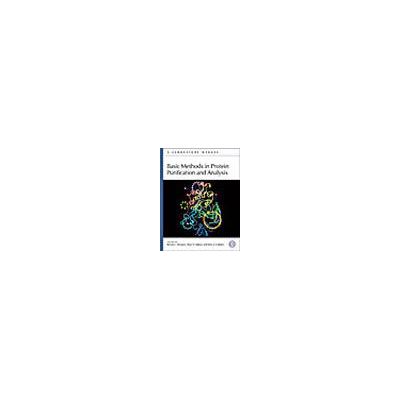
Price: 315,00 lei
Availability: in supplier's stock
Author: Richard J. Simpson, Joint ProteomicS Laboratory (JPSL) of the Ludwig Institute for Cancer Research and the Walter and Eliza Hall Institute of Medical Research, Melbourne, Australia; Peter D. Adams, Fox Chase Cancer Center, Philadelphia; Erica A. Golemis
ISBN: 978-087969867-6
Publisher: Cold Spring Harbor Laboratory Press
Publishing Year: 2009
Pages: 436
Category: BIOCHEMISTRY
DESCRIPTION
Understanding how proteins function is an essential part of many biological research endeavors. The complexity and sheer number of proteins in a cell are impediments to identifying proteins of interest or purifying proteins for function and structure analysis. Thus, reducing the complexity of a protein sample or in some cases purifying a protein to homogeneity is necessary. The latest manual in the Basic Methods series contains a collection of convenient and easy to use protein purification protocols along with a sampling of dependable methods for assessing protein–protein interactions. The protocols are supported by background information to assist researchers in understanding how the purification methods work and how to optimize and troubleshoot the methods.
The collection of essential methods found in Basic Methods in Protein Purification and Analysis is mainly drawn from the popular manuals Proteins and Proteomics, Purifying Proteins for Proteomics, and Protein–Protein Interactions, 2nd Ed. In addition to protocols for purification using gel electrophoresis and column chromatography, this book contains tested methods for preparing cellular and subcellular extracts—a critical and often neglected step in successful protein purification. Rounding out the manual are methods for characterizing protein–protein interactions, an extensive appendix of essential methods for quantifying protein concentration, stabilizing and storing proteins, concentrating proteins, and immunoblotting. Finally, there is a new chapter on a method complementary to gel electrophoresis and chromatography: in silico analysis of genomic and proteomic databases.
Contents
1. Introduction to Protein Purification Strategies
2. Preparation of Cellular and Subcellular Extracts
Section 1: Purification Using Gel Electrophoresis
3. One-dimensional Polyacrylamide Gel Electrophoresis
4. Preparative Two-dimensional Gel Electrophoresis with Immobilized pH Gradients
Section 2: Purification Using Column Chromatography
5. Ion-exchange Chromatography
6. Size-exclusion Chromatography
7. Reversed-phase High-performance Liquid Chromatography
8. Affinity and Immunoaffinity Chromatography
9. Metal Chelate Affinity Chromatography
10. Multidimensional Chromatography of Intact Proteins
Section 3: Characterizing Protein Complexes
11. Identification of Protein–Protein Interactions by Conventional Column Chromatography
12. Identification of Associated Proteins by Coimmunoprecipitation
13. Chromatin Immunoprecipitation of Protein Complexes
14. Identification of Protein–Protein Interactions with Glutathione-S-Transferase Fusion Proteins
15. Direct Visualization of Protein Interactions in Living Cells Using Bimolecular Fluorescence Complementation Analysis
16. In Silico Tools: Analysis for Creating Focused Interaction Networks
Appendices
1. Measuring the Concentration of Proteins
2. Concentrating Solutions of Proteins
3. Stabilization of Proteins for Storage
4. Immunoblotting and Staining of Membrane-bound Proteins
5. General Cautions
The collection of essential methods found in Basic Methods in Protein Purification and Analysis is mainly drawn from the popular manuals Proteins and Proteomics, Purifying Proteins for Proteomics, and Protein–Protein Interactions, 2nd Ed. In addition to protocols for purification using gel electrophoresis and column chromatography, this book contains tested methods for preparing cellular and subcellular extracts—a critical and often neglected step in successful protein purification. Rounding out the manual are methods for characterizing protein–protein interactions, an extensive appendix of essential methods for quantifying protein concentration, stabilizing and storing proteins, concentrating proteins, and immunoblotting. Finally, there is a new chapter on a method complementary to gel electrophoresis and chromatography: in silico analysis of genomic and proteomic databases.
Contents
1. Introduction to Protein Purification Strategies
2. Preparation of Cellular and Subcellular Extracts
Section 1: Purification Using Gel Electrophoresis
3. One-dimensional Polyacrylamide Gel Electrophoresis
4. Preparative Two-dimensional Gel Electrophoresis with Immobilized pH Gradients
Section 2: Purification Using Column Chromatography
5. Ion-exchange Chromatography
6. Size-exclusion Chromatography
7. Reversed-phase High-performance Liquid Chromatography
8. Affinity and Immunoaffinity Chromatography
9. Metal Chelate Affinity Chromatography
10. Multidimensional Chromatography of Intact Proteins
Section 3: Characterizing Protein Complexes
11. Identification of Protein–Protein Interactions by Conventional Column Chromatography
12. Identification of Associated Proteins by Coimmunoprecipitation
13. Chromatin Immunoprecipitation of Protein Complexes
14. Identification of Protein–Protein Interactions with Glutathione-S-Transferase Fusion Proteins
15. Direct Visualization of Protein Interactions in Living Cells Using Bimolecular Fluorescence Complementation Analysis
16. In Silico Tools: Analysis for Creating Focused Interaction Networks
Appendices
1. Measuring the Concentration of Proteins
2. Concentrating Solutions of Proteins
3. Stabilization of Proteins for Storage
4. Immunoblotting and Staining of Membrane-bound Proteins
5. General Cautions
Book categories
-Special order
-Publishers
-Promo
-Callisto Publications
-New books
-- 604,80 leiMRP: 672,00 lei
- 585,90 leiMRP: 651,00 lei
- 1323,00 leiMRP: 1470,00 lei
Promotions
-- 144,38 leiMRP: 262,50 lei
- 207,90 leiMRP: 231,00 lei
- 1323,00 leiMRP: 1470,00 lei


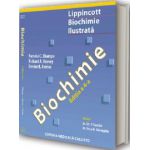
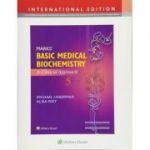


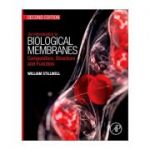
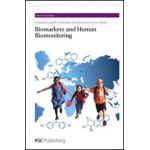






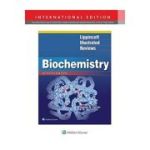
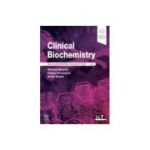


OUR VISITORS OPINIONS